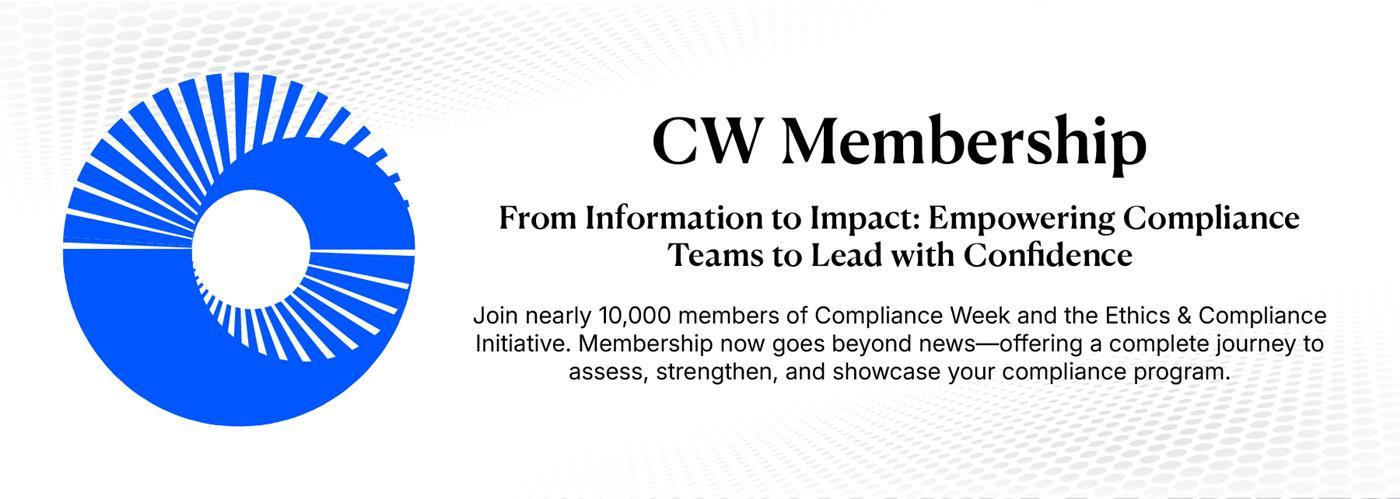- Home
-
News
- Back to parent navigation item
- News
- National Compliance Officer Day 2025
- Accounting & Auditing
- AI
- AML
- Anti-Bribery
- Best Practices
- Boards & Shareholders
- Cryptocurrency and Digital Assets
- Culture
- ESG/Social Responsibility
- Ethics & Culture
- Europe
- Financial Services
- Internal Controls
- Regulatory Enforcement
- Regulatory Policy
- Risk Management
- Sanctions
- Surveys & Benchmarking
- Supply Chain
- Third Party Risk
- Whistleblowers
- Opinion
- Benchmarking
- Certification
- Events
- Research
- Awards
-
CW Connect
- Back to parent navigation item
- CW Connect
- Sign In
- Apply
- Membership
Ask a CCO: How does your firm assess the efficacy of new tech?
By Compliance Week2022-09-20T13:00:00

Four senior compliance practitioners offer a glimpse at the technology journey of their companies, from receiving resource support to new tech implementation and ongoing due diligence. Today’s question:
Q: How does your firm assess the efficacy of new tech prior to use?
THIS IS MEMBERS-ONLY CONTENT
You are not logged in and do not have access to members-only content.
If you are already a registered user or a member, SIGN IN now.
Related articles
-
 Opinion
OpinionFINRA’s GenAI wake-up call: What compliance professionals must do now
2025-12-24T19:04:00Z By Tom Fox
FINRA’s rules are intended to be technologically neutral. They apply when companies use GenAI or similar technologies in their businesses, just as they apply when companies use any other technology or tool. But what does that mean for a compliance professional using GenAI?
-
 Opinion
OpinionHow to identify and mitigate risks posed by Foreign Terrorist Organizations
2025-12-24T18:55:00Z By Michael K. Atkinson and Caroline E. Brown, CW guest columnists
Since Inauguration Day on Jan. 20, 2025, the Trump Administration has made it a priority to expand the list of designated Foreign Terrorist Organizations.
-
 Article
ArticleEU loosens AI and data rules
2025-12-24T18:45:00Z By Neil Hodge
Europe has been at the forefront of designing strong—but flexible—rules around data use and the safe development of AI, but the EU recently announced plans to simplify some key measures around data privacy and AI governance, which have met with mixed responses.
More from Opinion
-
 Opinion
OpinionWhat the Copilot Usage Report 2025 Means for Corporate Compliance
2025-12-18T18:48:00Z By Tom Fox
Microsoft’s Copilot Usage Report 2025 offers compliance professionals a rare, data-driven look at how artificial intelligence is actually being used by millions of people, rather than how organizations assume it is being used.
-
 Opinion
OpinionEmerging antitrust risks in the expanded use of AI
2025-12-16T19:24:00Z By Lee F. Berger and Robert Klotz, CW guest columnists
Concerns over competitors using AI pricing tools to fix prices have dominated antitrust discussions in the U.S. and EU. Recent cases show how algorithmic pricing might enable unlawful coordination.
-
 Opinion
OpinionHow to make the business case to upgrade records management systems
2025-12-10T15:29:00Z By Mark Diamond, CW guest columnist
Companies are giving their records management programs a makeover, and not for the reasons you may think. What used to be a sleepy back-office legal department function is now front and center, often driven by compliance teams. Organizations are discovering that a “save everything, forever” de facto policy doesn’t ...
- Terms and Conditions
- Privacy Policy
- Do Not Sell My Info
- © 2025 Compliance Week
Site powered by Webvision Cloud






